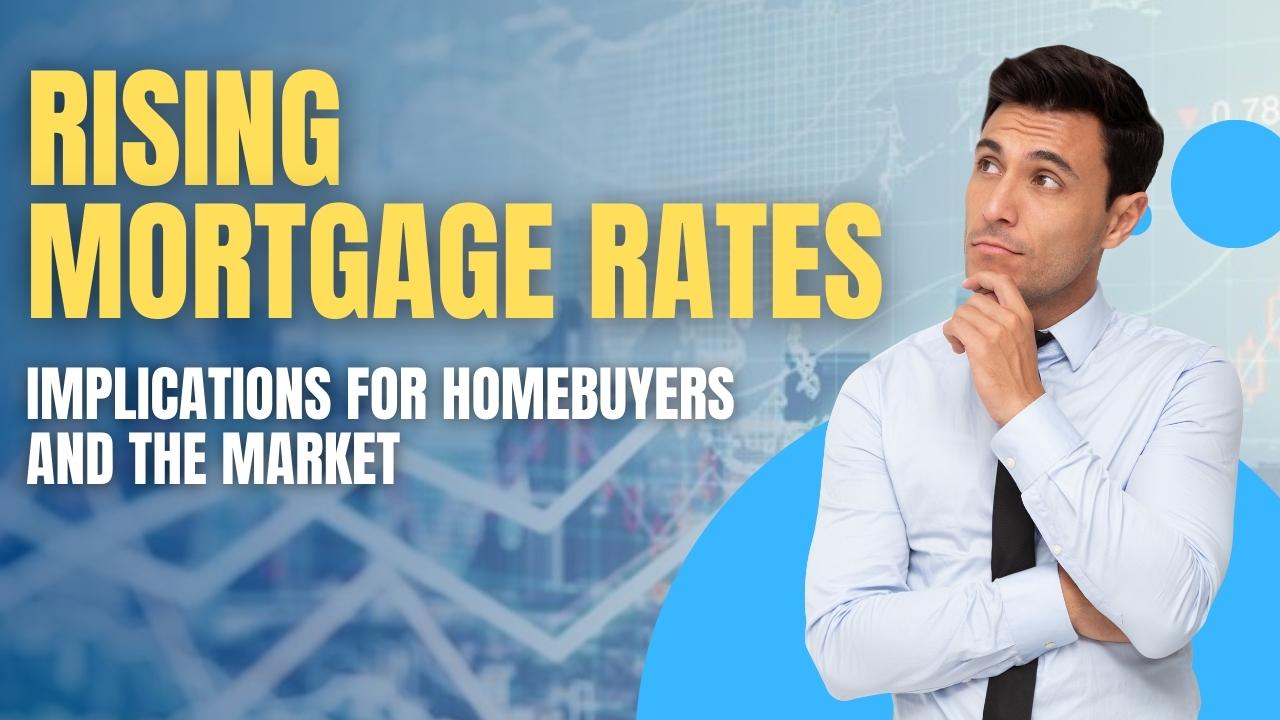RISING MORTGAGE RATES: IMPLICATIONS FOR HOMEBUYERS AND THE MARKET
Thursday, October 26, 2023

RISING MORTGAGE RATES: IMPLICATIONS FOR HOMEBUYERS AND THE MARKET
TODAY'S HOT NEWSIn the world of real estate, the shifting tides of the economy have a profound impact on both buyers and sellers. Lately, the waves have been turbulent, and the most recent news is sending shockwaves through the industry.
Home loan borrowing costs have been on the rise for five consecutive weeks, pushing the average long-term U.S. mortgage rate to a level we haven't seen in over two decades. This trend is posing significant challenges for prospective homebuyers, as their purchasing power is being chipped away.
The average rate for the benchmark 30-year home loan now stands at 7.57%, up from 7.49% just a week ago, according to mortgage buyer Freddie Mac. These higher rates translate to hundreds of additional dollars in monthly expenses for borrowers, limiting how much they can afford. In a market already deemed out of reach for many Americans, these rising costs create an additional barrier to homeownership.
The contrast is striking when you consider that the average rate on a 30-year mortgage is now more than double what it was just two years ago when it was at a mere 3.05%. These surging rates are making it harder for homeowners who locked in rock-bottom rates a couple of years back to consider selling.
To compound the issue, a recent poll by Zillow revealed that 84% of potential homebuyers believe this is a bad time to buy, and only 1 in 5 expect rates to decrease within the next 12 months. This sentiment is among the most pessimistic since the Great Recession over a decade ago.
The high mortgage rates, coupled with an alarmingly low inventory of homes for sale, have created a perfect storm for potential homebuyers. This has led to home prices remaining near all-time highs, even as sales of existing U.S. homes have fallen by 21% during the first eight months of this year compared to the same period in 2022.
Hannah Jones, senior economic research analyst at Realtor.com, noted, "Though buyers have shown signs of adjusting to the higher-rate environment, limited inventory has kept home prices elevated, cutting further into the buying power of shoppers hoping to find a suitable home."
Notably, home loan purchase applications have plummeted to multi-decade lows, now nearly 20% below last year's pace, as reported by the Mortgage Bankers Association. However, there's been a surge in applications for adjustable-rate mortgages, reflecting buyers' quest for payment relief.
For our local real estate market, this challenging landscape has dealt a severe blow. With minuscule inventory and lukewarm buyer demand, sales production has essentially stagnated. Unfortunately, there's no immediate end in sight. As interest rates inch closer to 8%, we must brace ourselves for what's likely to be a problematic year ahead.
While our focus remains on the real estate arena, it's essential to acknowledge the wider economic context. The ongoing crisis in the Middle East, while devastating, exacerbates the economic challenges we face. In fact, a term we thought was relegated to history books is resurfacing – stagflation. For those unfamiliar with the 1970s, stagflation represents a stagnant economy combined with rising inflation over an extended period. Mortgage rates during that era hovered in the painful range of 14% to 17% for a 20-year loan.
Some experts are now predicting a return to stagflation, driven by various factors, including higher oil prices, global geopolitical disruptions, severe weather events, and more. Central banks, they argue, will be powerless against these new and more potent forces influencing consumer prices. The future may indeed hold sobering economic challenges.
The real estate market and the broader economy are intertwined, and understanding these dynamics is crucial for anyone looking to navigate the complexities of today's real estate landscape. Stay informed, stay vigilant, and be prepared for whatever the future may bring.
